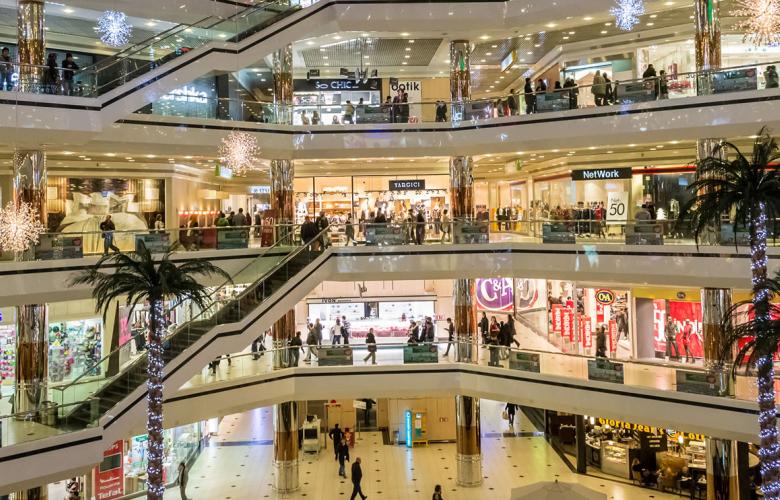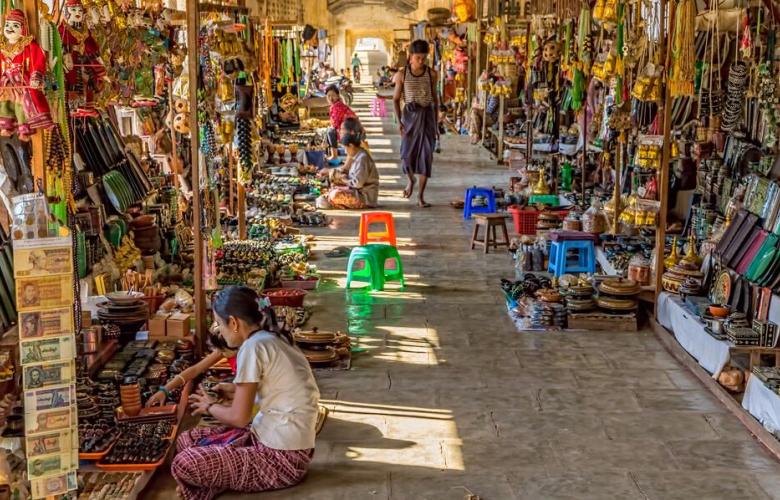A focus is needed on tenant diversity in Yangon's retail sector
Contact
A focus is needed on tenant diversity in Yangon's retail sector
Colliers International Myanmar has released their Yangon Retail Quarterly Review Report Q4 2017.
According to Colliers International Myanmar the retail sector closed 2017 with a high occupancy rate of 95%. Average lease rates continued to grow at a high single digit year-on-year. Growth is seen to continue albeit at a somewhat modest pace.In the meantime, we expect developers to continually improve their offerings. Besides adopting modern global concepts, shopping malls should focus more on tenant diversity. Overall, this has to be reinforced with leisure and recreational activities to create a more dynamic and lifestyle oriented development.
Forecast at a glance
- Demand Demand for retail space should remain strong in the long term. We expect high foot traffic for malls with unique features and diversified tenancy moving forward. .
- Supply Total leasable stock in 2018 is substantial at more than 80,400 sq m. However, no sizeable projects are yet set afterwards.
- Occupancy rate We expect average occupancy to remain in the high 90% range in the medium term. We foresee stores further expanding, and local businesses acquiring more foreign franchises.
- Rent We expect rents to rise 4-5% owing to the high demand in the near term. Rents should continue moving upwards in the medium term.
New Supply Reached New Record High in 2017
New retail stock amounted to 79,400 sq m (854,600 sq ft) in 2017, more than double the level of 2016. The figure reached a new record high, with the previous peak last seen in 2015. The recent considerable rise in supply was mainly driven by shopping malls St John City Mall and Junction City - collectively at about 67,000 sq m (721,100 sq ft) of leasable space. Some other completed projects are supporting retail components in residential buildings Riverview Point Yangon and Crystal Tower.

The past year has seen notable improvements as new developments upped the shopping experience. These malls have started adopting more modern features e.g. higher ceilings, wider common spaces, better natural lighting, as well as unique installations such as water features and indoor pocket gardens. Besides the improving tenancy mix, tenant segmentation is also getting more defined. Select shopping malls now have dedicated I.T., F&B and Entertainment Zones. We expect future projects to replicate this going forward. On the other hand, some retail establishments remain outdated and poorly maintained. This has resulted in some recent closures, driving a reduction in the total retail space to 326,800 sq m (3,517,600 sq ft). In 2018, we expect new supply to be substantial at 81,400 sq m (876,100 sq ft). The majority of these upcoming retail centres are integrated into mixed-use projects, most of which are located in the Inner City Zone. In a stark contrast, additional stock in each of 2019 and 2020 is meagre. As such, we advise developers to take advantage of this opportunity. In fact, Colliers continually sees positive prospects for large-scale shopping malls. Lifestyle-oriented developments offering leisure and recreational activities are likewise strong draws for families and among the growing young population. Besides adopting modern concepts, future developments should be reinforced with a well curated and wider array of tenants.
Diversifying The Tenant Mix
 At present, Yangon’s shopping malls are still predominantly geared towards apparel and accessories - representing more than half of the total tenant mix. This is followed by food and beverage, specialty stores, as well as health, beauty and wellness centres, among others. Despite the strong presence of clothing and apparel products, we observe that locals gravitate more towards F&B and entertainment establishments instead. With the population’s modest income, the majority tend to veer away especially from foreign clothing brands. For some, the access to better-priced products in Bangkok is perceived more ideal. Meanwhile, bargain and wholesale centres, typically of poor building quality, remain a destination for low-priced apparel instead. Moving forward, we see the need for retail centres to focus on tenant diversity. With the typical brands becoming widely repetitive across the city malls, Colliers advises developers to create an all-inclusive destination instead. Other prospective tenants such as aesthetic clinics, wellness centres, showrooms, and auxiliary service providers should complement a more holistic retail offering. The inclusion of institutional occupiers will also further boost foot traffic. In fact, incorporating educational and training centres as well as government branch offices are proven successful retail practices in other Southeast Asian cities. This can similarly be adopted in Yangon.
At present, Yangon’s shopping malls are still predominantly geared towards apparel and accessories - representing more than half of the total tenant mix. This is followed by food and beverage, specialty stores, as well as health, beauty and wellness centres, among others. Despite the strong presence of clothing and apparel products, we observe that locals gravitate more towards F&B and entertainment establishments instead. With the population’s modest income, the majority tend to veer away especially from foreign clothing brands. For some, the access to better-priced products in Bangkok is perceived more ideal. Meanwhile, bargain and wholesale centres, typically of poor building quality, remain a destination for low-priced apparel instead. Moving forward, we see the need for retail centres to focus on tenant diversity. With the typical brands becoming widely repetitive across the city malls, Colliers advises developers to create an all-inclusive destination instead. Other prospective tenants such as aesthetic clinics, wellness centres, showrooms, and auxiliary service providers should complement a more holistic retail offering. The inclusion of institutional occupiers will also further boost foot traffic. In fact, incorporating educational and training centres as well as government branch offices are proven successful retail practices in other Southeast Asian cities. This can similarly be adopted in Yangon.
Occupancy at an All-Time High
 Notwithstanding the considerable stock added in 2017, the occupancy rate remained above the 90% level. The sizeable supply anticipated in 2018 may exert downward pressure on occupancy – albeit at a lesser degree as tenant pre-commitments remain strong. Moreover, retailers remain bullish, evident from the continuous store expansions and foreign franchise acquisitions. Therefore, we see occupancy moving further upwards; and this should in fact be facilitated by the lack of new supply starting 2019. Meanwhile, rental rates grew to USD32 per sq m per month, up by 7% in Q4 2017. We predict rental levels to increase between 4 and 5% annually in the next two to three years.
Notwithstanding the considerable stock added in 2017, the occupancy rate remained above the 90% level. The sizeable supply anticipated in 2018 may exert downward pressure on occupancy – albeit at a lesser degree as tenant pre-commitments remain strong. Moreover, retailers remain bullish, evident from the continuous store expansions and foreign franchise acquisitions. Therefore, we see occupancy moving further upwards; and this should in fact be facilitated by the lack of new supply starting 2019. Meanwhile, rental rates grew to USD32 per sq m per month, up by 7% in Q4 2017. We predict rental levels to increase between 4 and 5% annually in the next two to three years.
Click here to download the Colliers Yangon Retail Quarterly Review Report Q4 2017
For more information on the Yangon property market or to discuss the report email karlo Pobre from Colliers International Myanmar via the contact details below.
Similar to this:
Yangon’s retail market gains further momentum








